A Practical Report on Body Composition Analysis using Techniques
VerifiedAdded on 2023/04/08
|7
|970
|392
Report
AI Summary
This report presents a body composition analysis using various techniques, including BMI, waist-to-hip ratio, bio-impedance, and body composition equipment ('Body Stat'). The study involved ten participants (5 males and 5 females) aged 19-25. The hypothesis that different measurement methods produce different results, with body composition methods providing more detailed and accurate analysis, was supported. The results indicated variations in body fat percentages between bio-impedance and body composition methods, with the latter reporting higher values and identifying fewer participants as 'healthy.' Methodological limitations, such as the inability of BMI and waist-to-hip ratios to specify fat percentage, were discussed. The conclusion emphasizes the importance of considering multiple methods for accurate body composition assessment, with body composition techniques providing the most accurate results.
1 out of 7
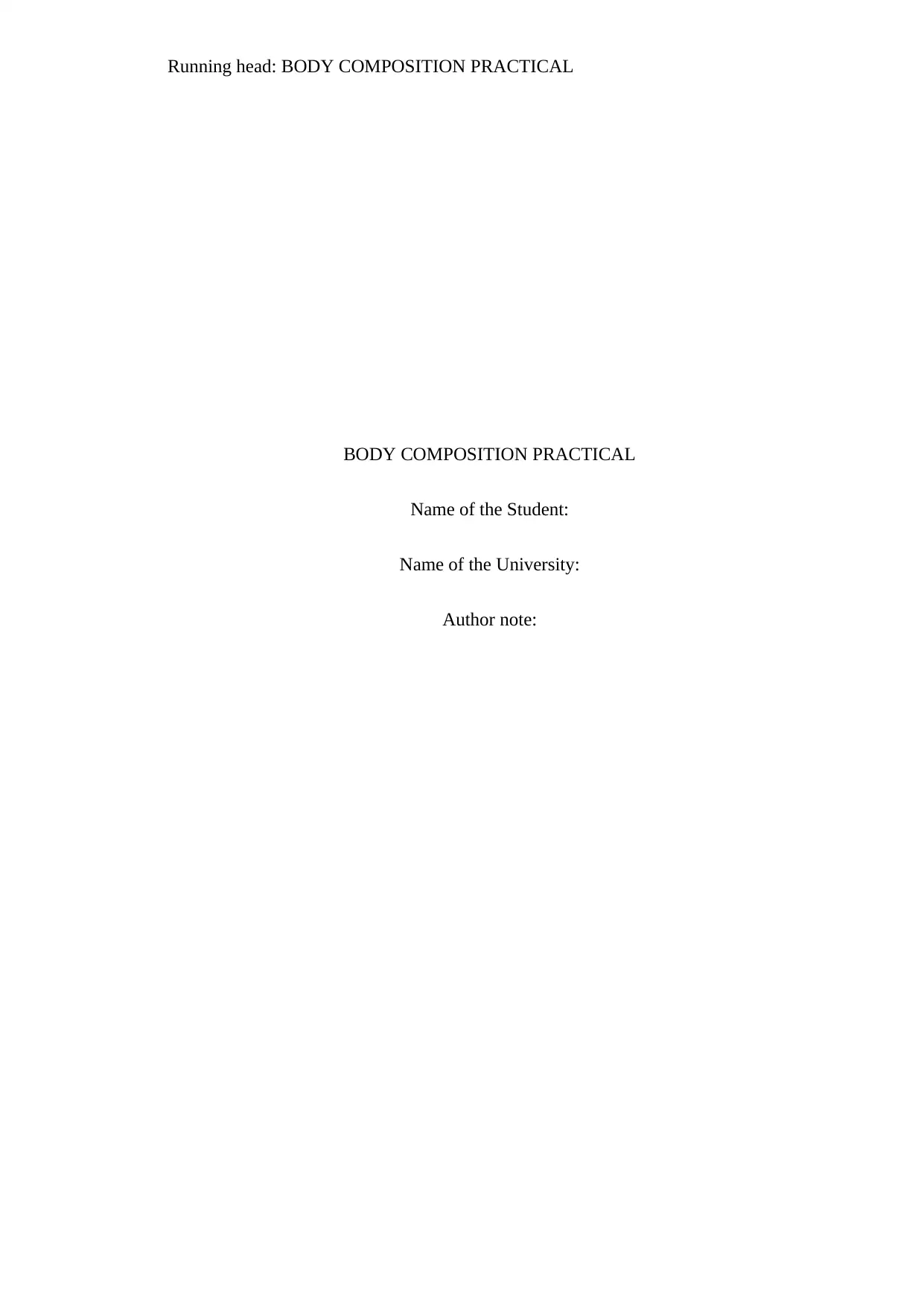
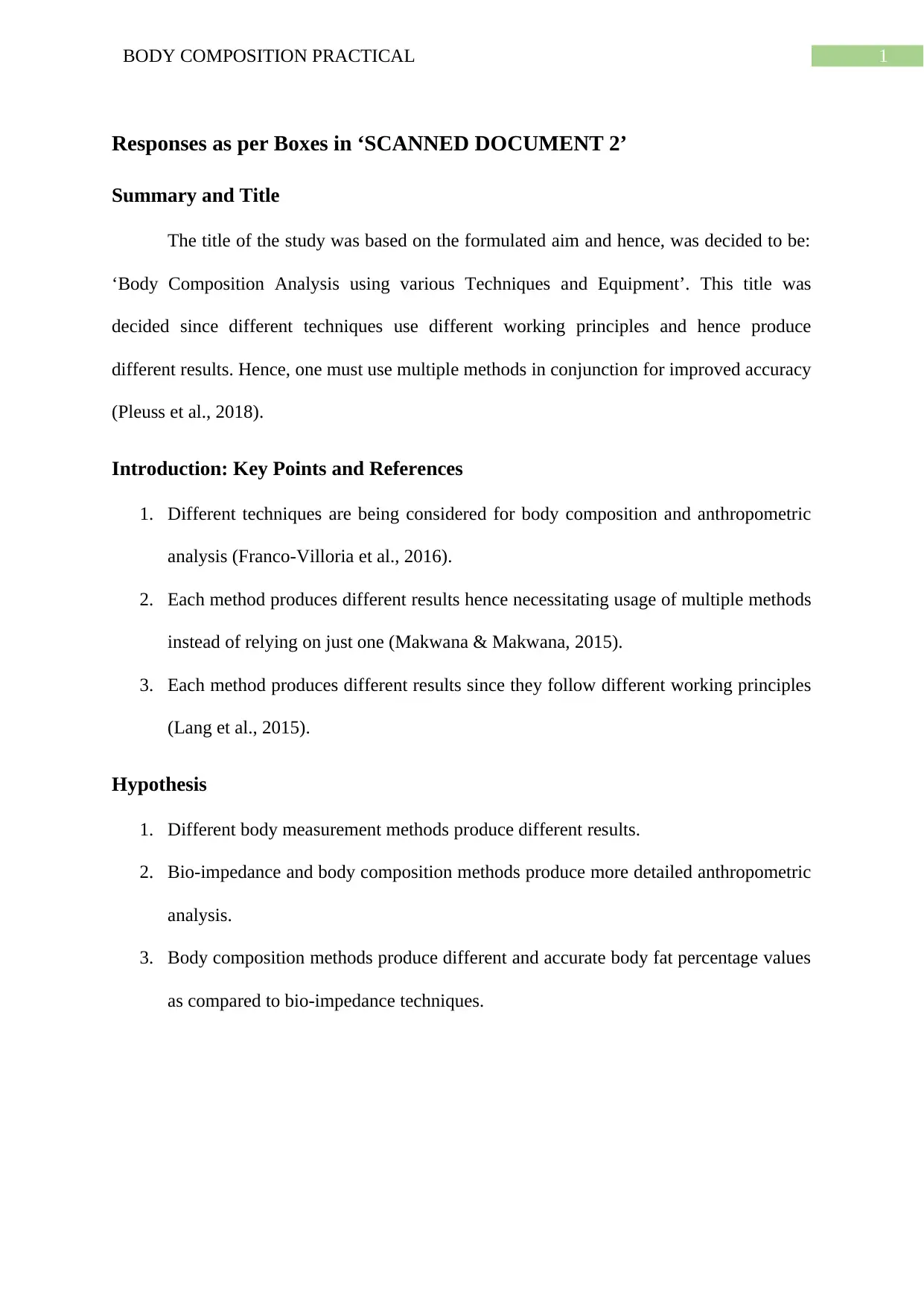
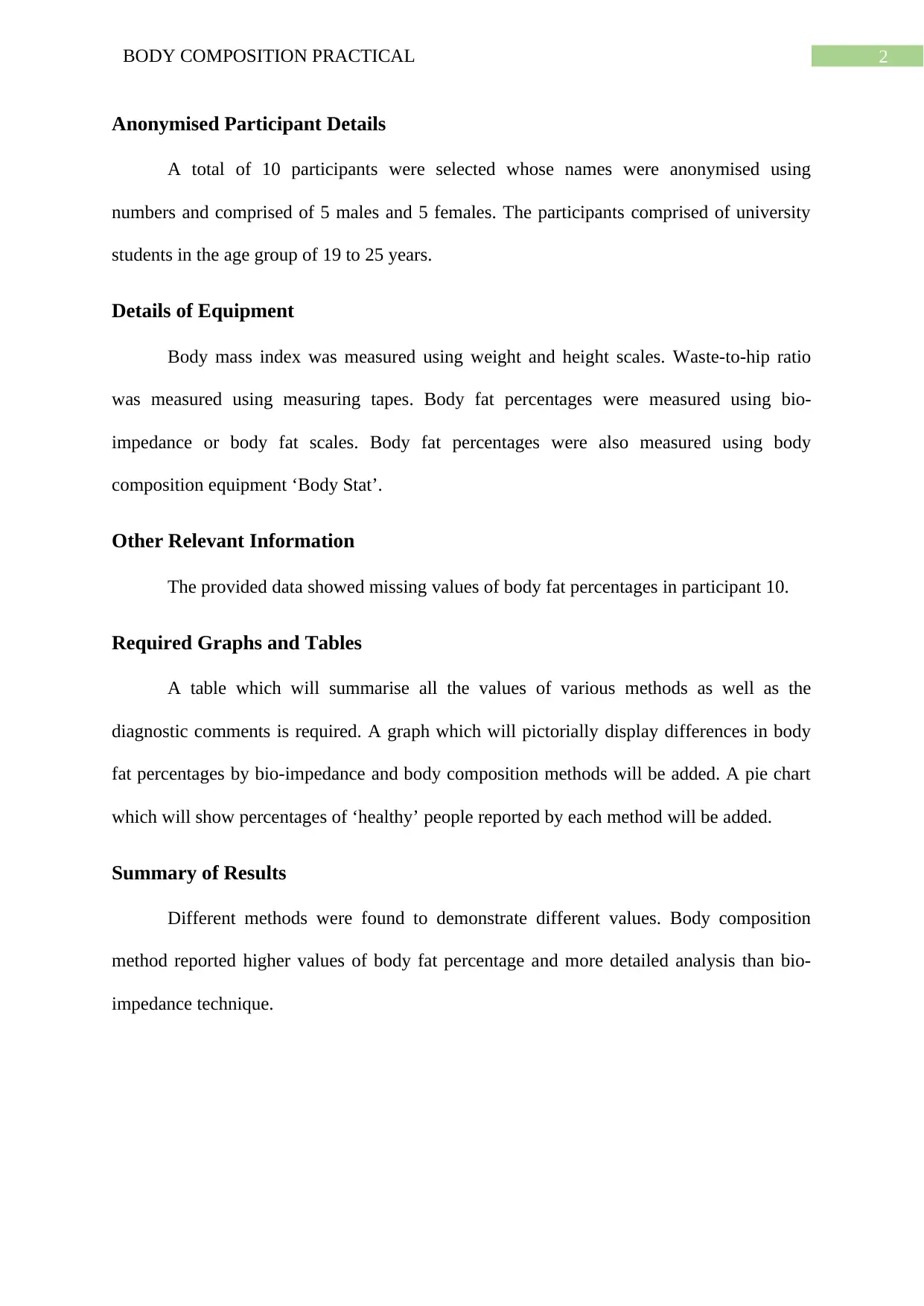

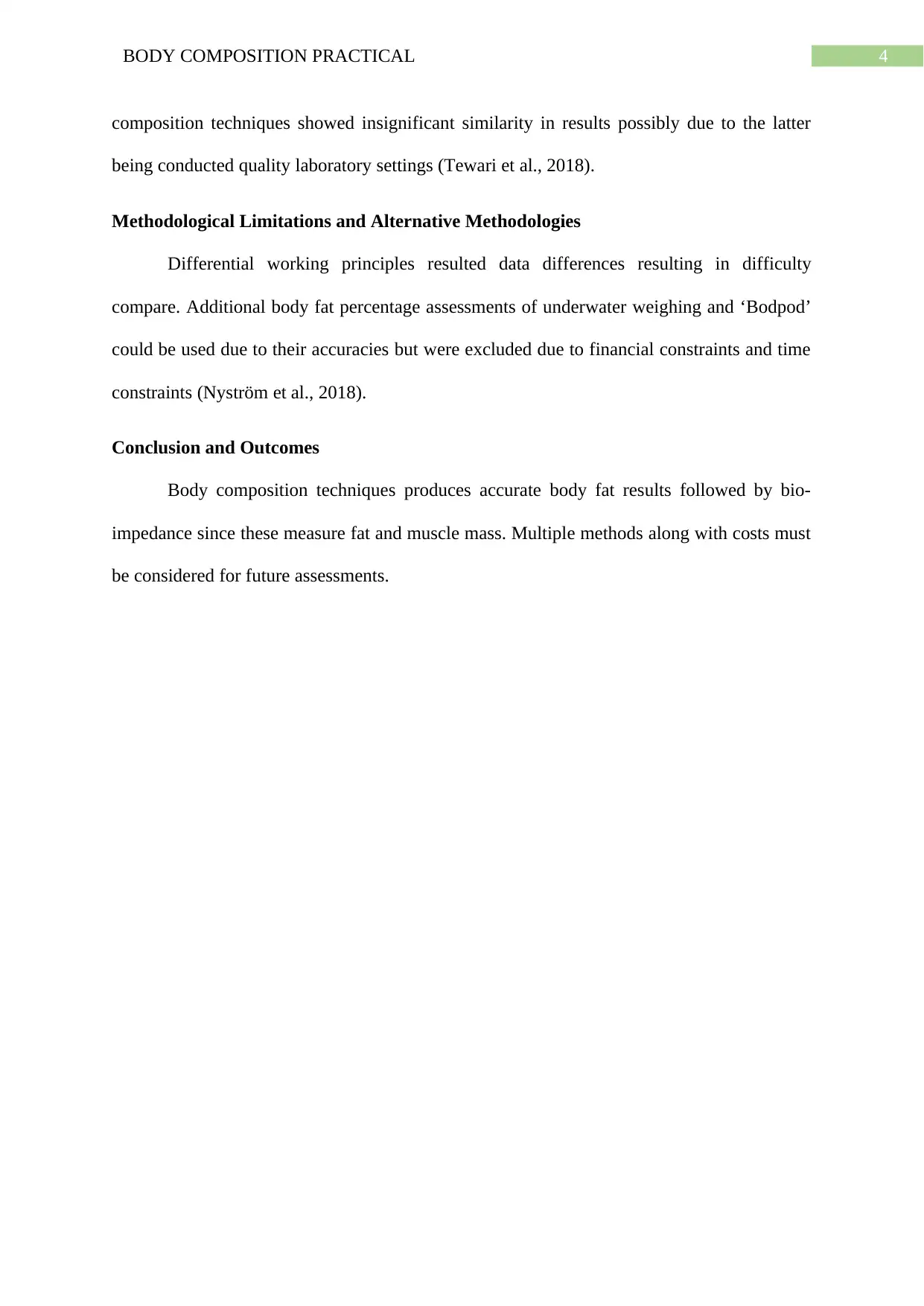
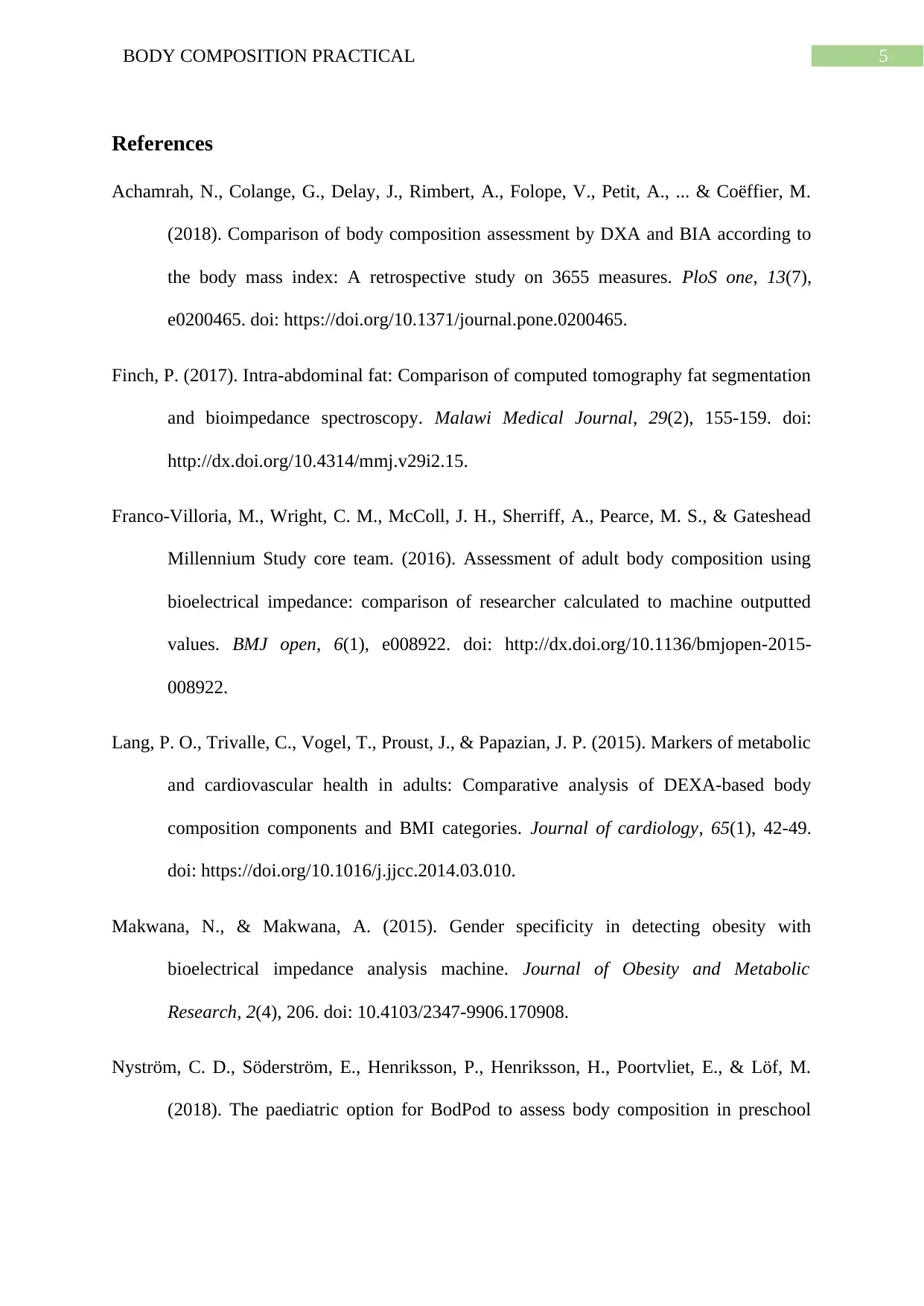
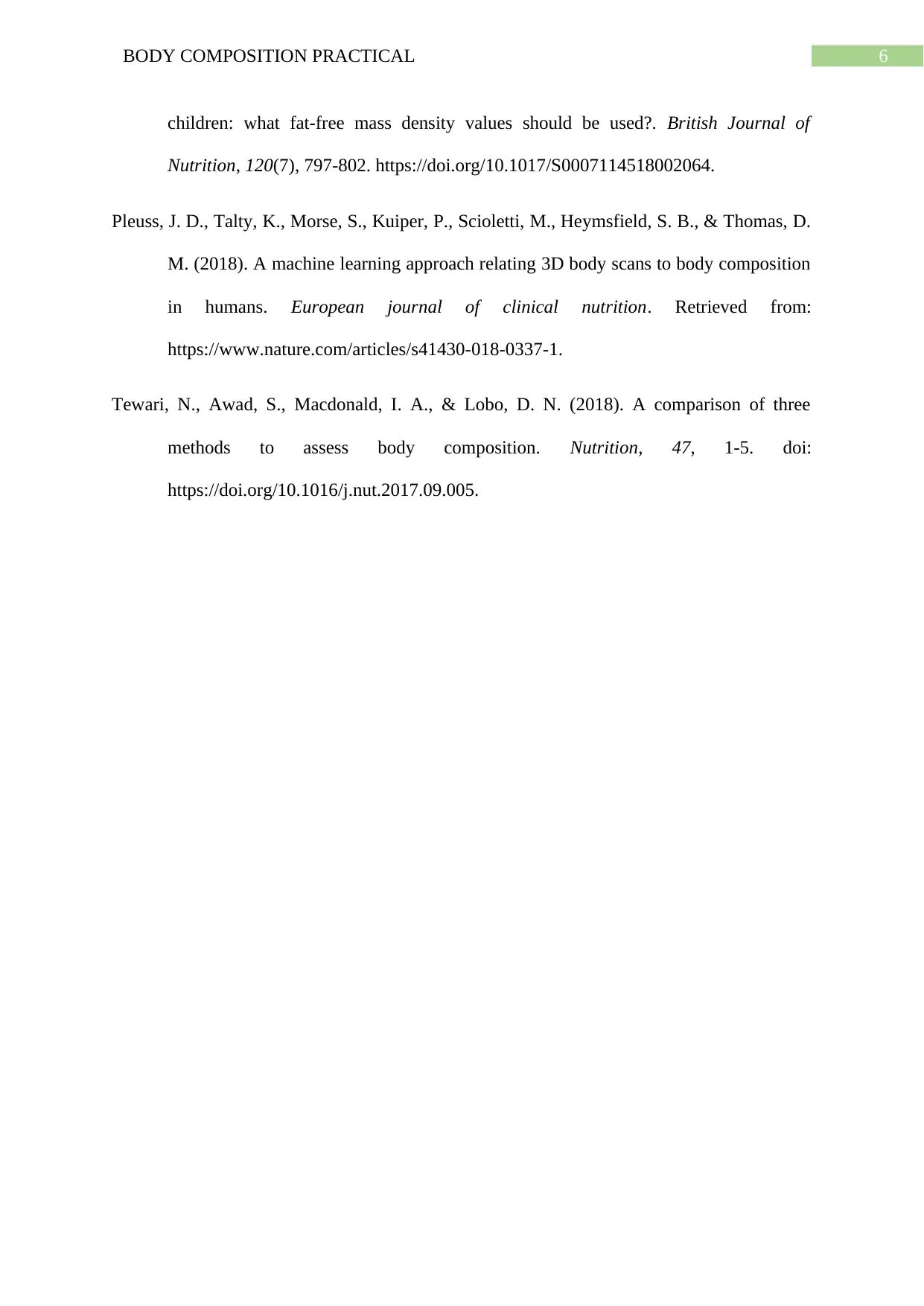






![[object Object]](/_next/static/media/star-bottom.7253800d.svg)